A semiconductor X is made by dopping a germanium crystal with arsenic (Z=33). A scond semiconductor Y is made by dopping germanium with indium (Z=49). The two are joined end to end and connected to a battery as shown. Which of the following statements is correct?
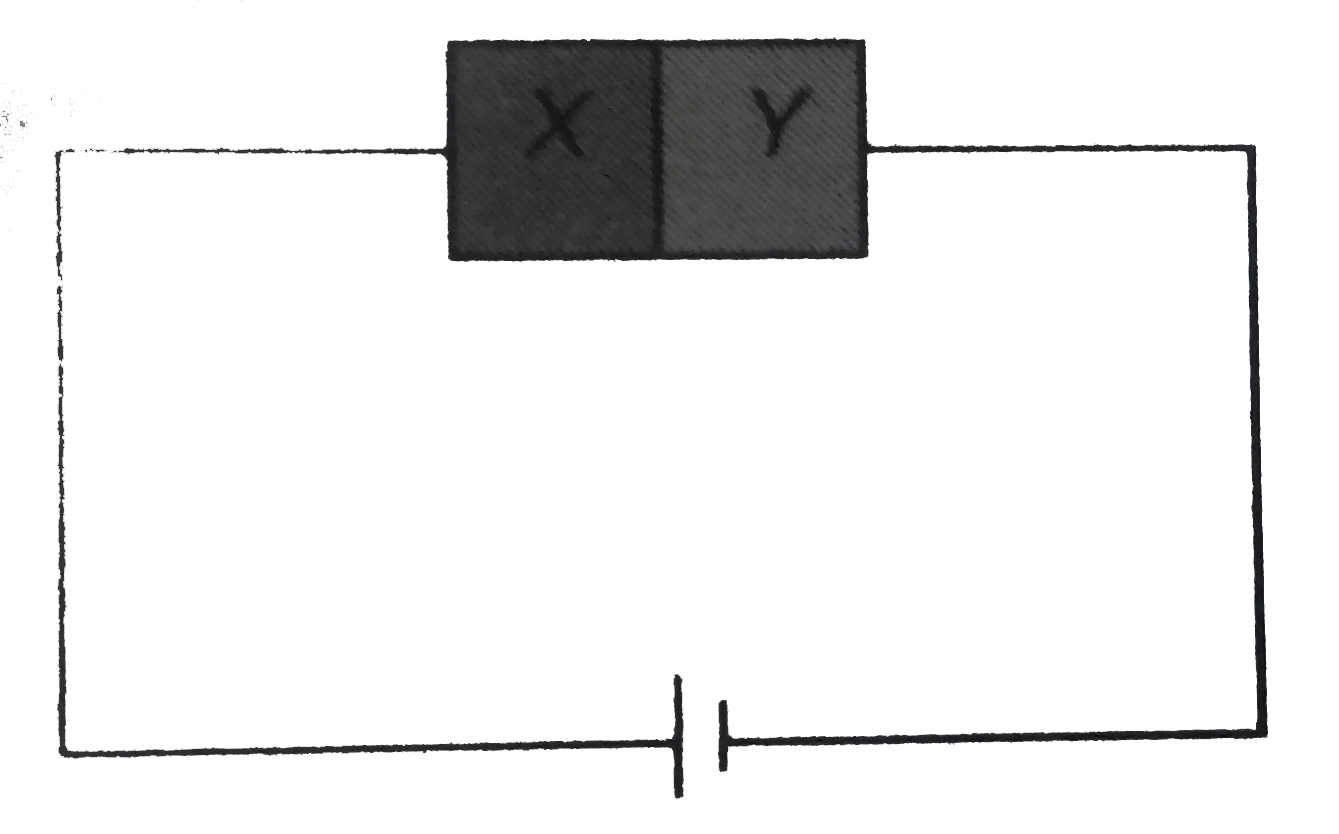
X is p-type, Y is n-type and the junction is forward biased
X is n-type, Y is p-type and the junction is forward biased
X is p-type, Y is n-type and the junction is reverse biased
X is n-type, Y is p-type and the junction is reverse biased
The correct Answer is:D
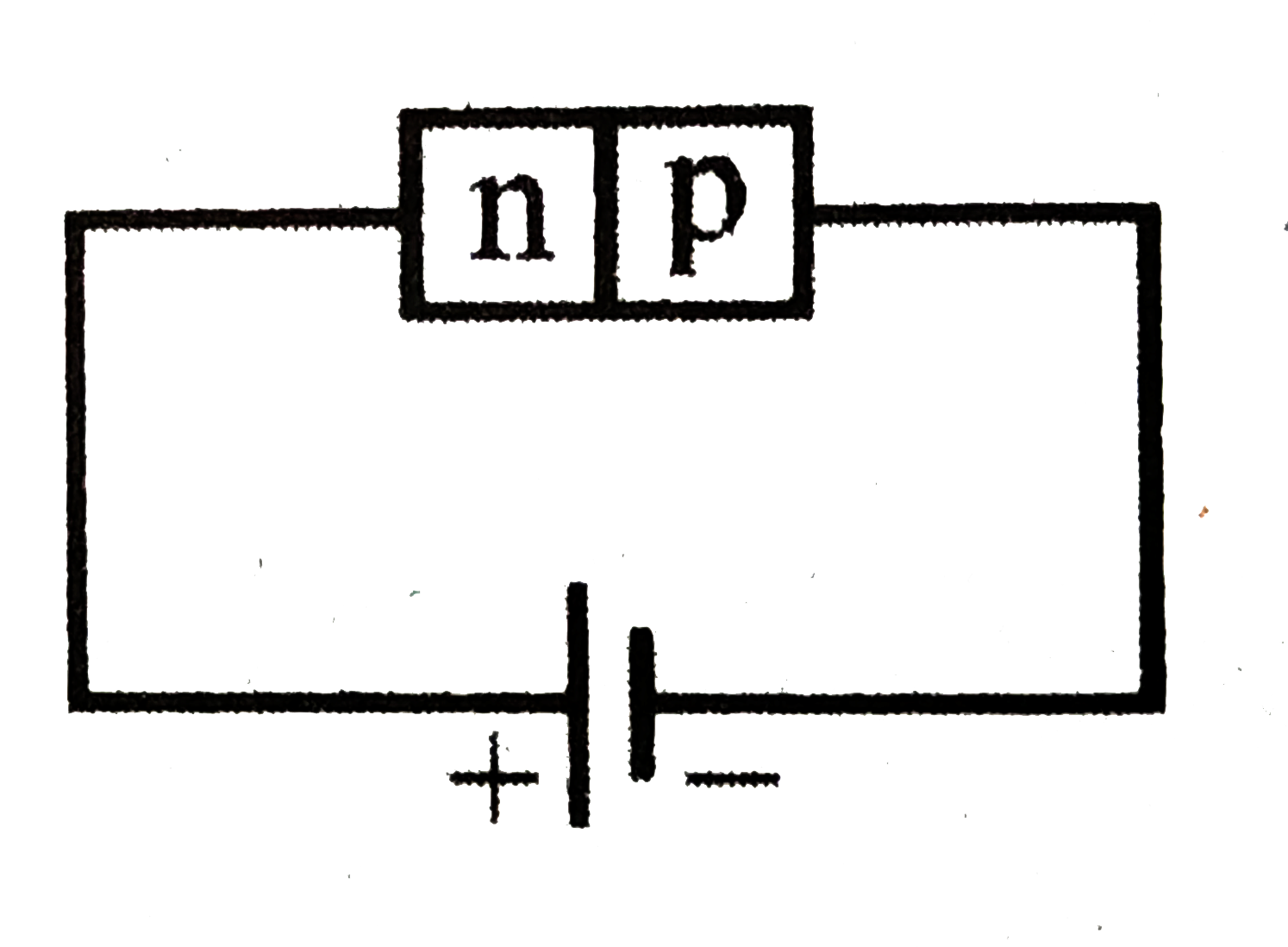
Arsenic is pentavalent.
∴ X becomes an n-type germanium semiconductor.
Indium is trivalent hence Y becomes a p-type Ge semiconductor.
n and p are connected to the positive and negative terminals of the cell respectively. Hence it is a reversed biased p-n junction.
Topper's Solved these Questions
Similar Questions
A semiconductor material x is made by doping a germanium crystal with indium another semiconductor material y is made by doping a x nad y ar then joined together and connected to a battery
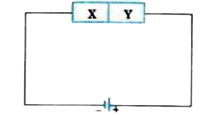
will the jucntion be forward or reverse biased also draw the V-I characteristics for the circuit
View SolutionTwo semiconductor materials X and Y, shown in the given, are made by doping germanium crystal with indium and arsenic respectively. The two are joined end to end and connected to a battery as shown.
(i) Will the junction be forward biased or reverse biased ?
(i) Sketch a V-I graph for this arrangement.
View Solution
Knowledge Check
If 2x=3y=12z, then which of the following statement is correct?
Axy=z(x+2y)Bxy=3z=(x+y)Cxyz=3x+yDxy=z(3x+y)Sohan connects three identical bulbs X, Y and Z as shown in the figure. Which of the following statements is correct?
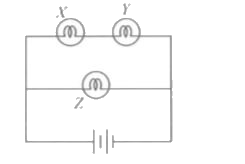 AIf bulb X is fused, then bulbs Y and Z will glow.BIf bulb Y is fused, then bulb X will glow.CIf bulb Z is fused, then bulbs X and Y will glow.DAll the bulbs will glow with equal brightness.
AIf bulb X is fused, then bulbs Y and Z will glow.BIf bulb Y is fused, then bulb X will glow.CIf bulb Z is fused, then bulbs X and Y will glow.DAll the bulbs will glow with equal brightness.A battery and three lamps are connected as shown:
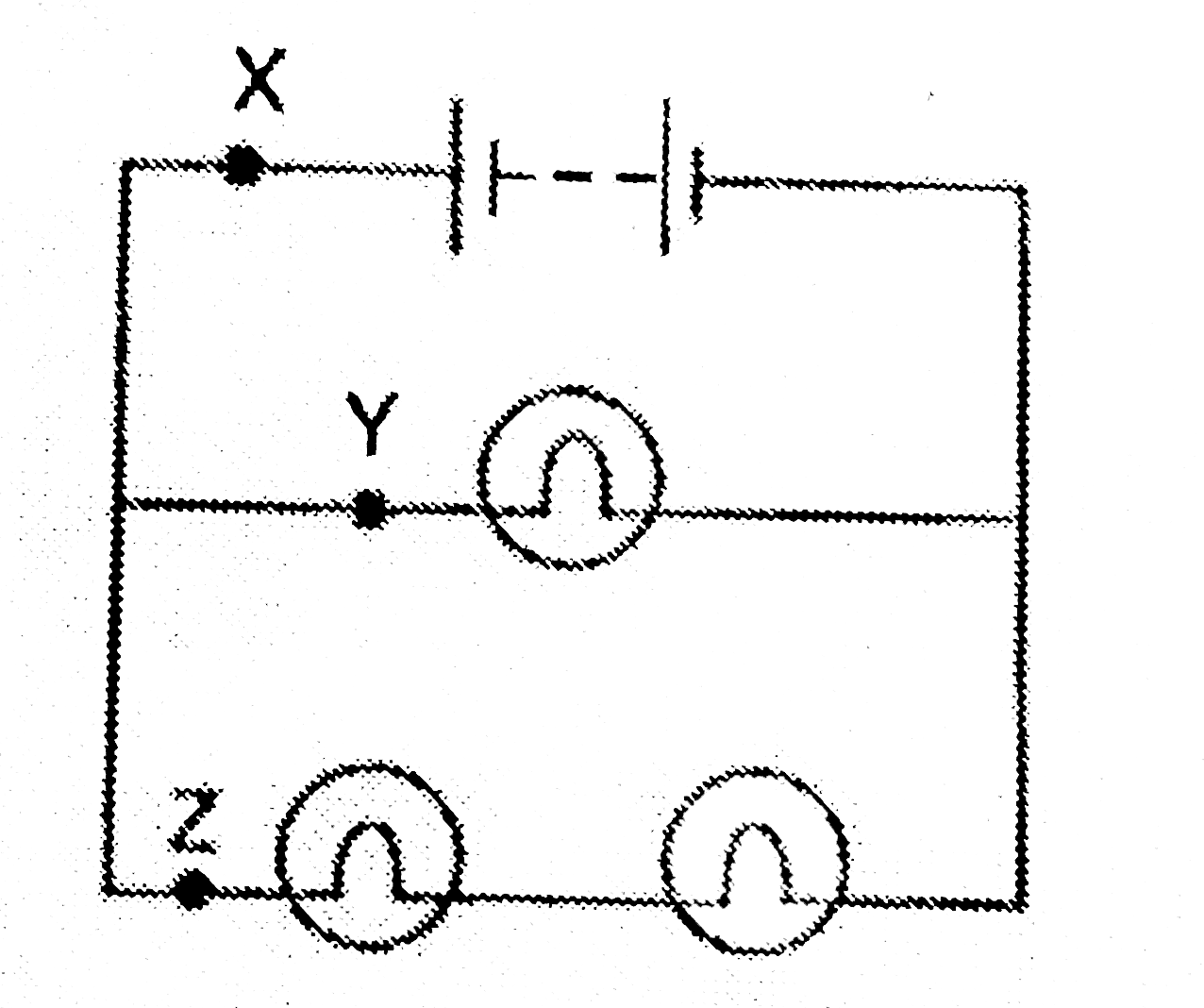
Which of the following statements about the currents at X,Y and Z is correct?AThe current at Z is greater than that at YBThe current at Y is greater than that at Z sCThe current at X equals the current at YDThe current at X equals the current at Z
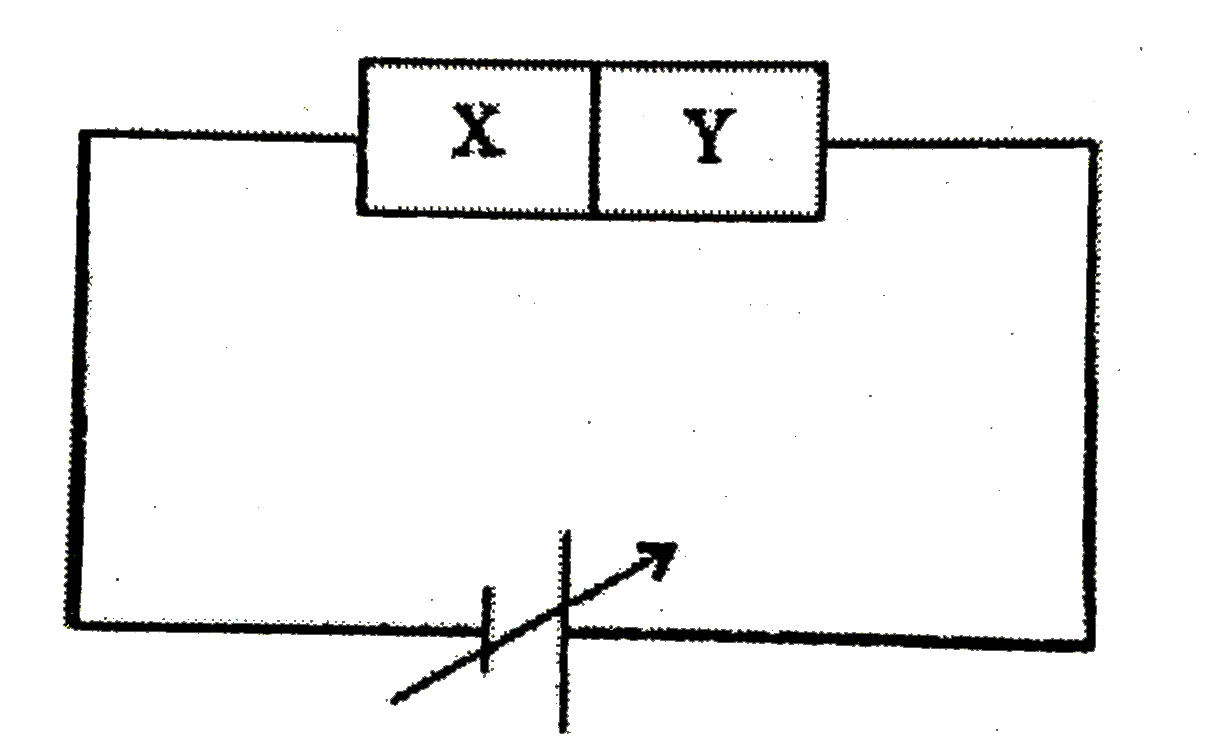
Two semiconductor materials X and Y shown in the given figure, are made by doping germanium crystal with indum and arsenic respectively. The two are joined end to end and connected to a battery as shown.
(i). Will the junction be forward biased or reverse biased.?
(ii). Sketch a V-I graph for this arrangement.
View SolutionA rod is made of uniform material and has non-uniform cross section. It is fixed at both the ends as shown and heated at mid-section. Which of the following are not correct?
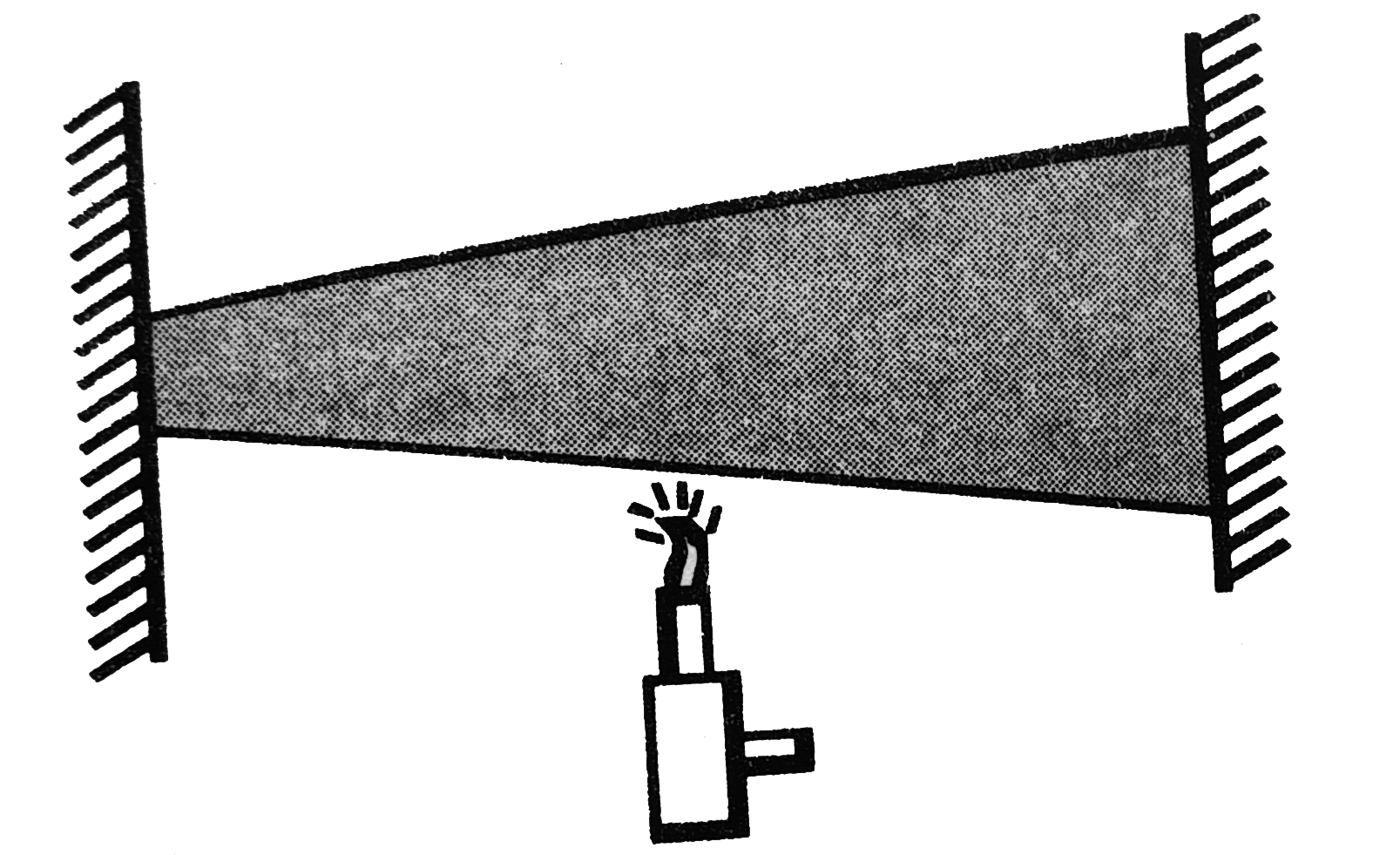
View SolutionLet P1:2x+y−z=3 and P2:x+2y+z=2 be two planes. Then, which of the following statement(s) is (are) TRUE?
View SolutionThe magnetic moment of two ions Mx+ and My+ of the element M(Z=26) is found to be 5.916B.M. If x>y, then which of the following statement is correct?
View SolutionThree different gases X, Y and Z of molecular masses 2, 16 and 64 were enclosed in a vessel at constant temperature till equilbrium is reaches. Which of the following statement is correct?
View Solution
